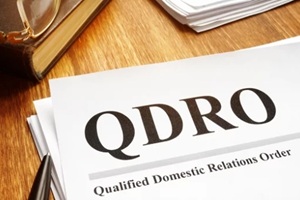 A high-asset divorce often involves multiple investment accounts, pensions, IRAs, 401(k)s, and other assets, making asset division, a central part of any divorce, an even more complex process. Deciding how assets are divided post-divorce, including how these decisions impact each spouse’s retirement finances, is often too complex for couples to manage without professional legal guidance.
A high-asset divorce often involves multiple investment accounts, pensions, IRAs, 401(k)s, and other assets, making asset division, a central part of any divorce, an even more complex process. Deciding how assets are divided post-divorce, including how these decisions impact each spouse’s retirement finances, is often too complex for couples to manage without professional legal guidance.
This brief guide focuses on the impact of high-asset divorces on pensions and retirement plans to provide couples with legal insight into their financial futures. A family law attorney experienced with high-asset divorces can help maneuver your situation. This can set parting couples on the right path toward mutually successful divorce negotiations, regardless of the size of their estate.
Types of Retirement Accounts
A couple’s retirement plan relies on their investments in one or more of three main retirement accounts. In high-asset divorces, more than one of these accounts often factors into the negotiations:
401(k)
A 401(k), also known as a defined-contribution plan, is an account sponsored by the spouse’s employer using funds from their paychecks. While distributions are taxable income post-retirement, the initial contributions are tax-deferred. This means that withdrawals from a 401(k) are considered income by the IRS and taxed accordingly, which should factor into the asset division process even if the couple is far from retirement.
Pension
Pensions, or defined-benefit plans, are funded by the working spouse during their years of active employment. After retirement, pensions provide a set monthly payment or a lump-sum payment. Under normal circumstances, pensions allow workers to plan for retirement without a separate investment plan.
However, determining a couple’s pension status becomes challenging in high-asset divorce cases. Since one spouse is the account holder, many divorce negotiations will be devoted to dividing these retirement assets while factoring for account ownership status, shared financial responsibilities, tax obligations, and more.
Individual Retirement Accounts (IRA)
An IRA is an elective retirement account between one spouse and an investment agency. IRAs can be Traditional, meaning taxes apply on withdrawals, or Roths, which are funded with post-tax income. These accounts will be opened and held under one spouse’s name. Since IRAs cannot be held jointly, their status in high-asset divorce is also complex.
How Qualified Domestic Relations Orders Work
 To mitigate the complicated asset division process of high-asset divorces, a Qualified Domestic Relations Order (QDRO) divides retirement assets to give each spouse a fair share of the benefits while preserving the tax advantages of owning each type of account.
To mitigate the complicated asset division process of high-asset divorces, a Qualified Domestic Relations Order (QDRO) divides retirement assets to give each spouse a fair share of the benefits while preserving the tax advantages of owning each type of account.
Here are some of the considerations that impact QDROs during high-asset divorces:
The Valuation Process
An accurate estate valuation is essential to any divorce proceeding. It is even more necessary in high-asset divorces due to the various high-value financial accounts that must be divided. In most cases, pension valuation alone is too complicated to negotiate without the experience of an accredited family law attorney.
The complexity stems from retirement assets having a current balance, a hypothetical future benefit amount, and investment potential. The account’s current value cannot simply be divided since the account holder would still retain the account’s tax advantages. Additionally, the initial investment may have been shared despite many investment accounts having a sole owner (e.g., the working spouse).
Tax Implications
Dividing retirement assets in high-asset divorce has lasting tax implications for both spouses. All retirement accounts, including 401(k)s, IRAs, and pension funds, have tax advantages and disadvantages depending on the withdrawal date.
For example, withdrawing from a traditional IRA account before the account holder has reached retirement age may result in penalties, including income tax calculations on the withdrawn amount. Couples in high-asset divorce negotiations must understand the tax advantages of their retirement accounts and the implications of dividing or withdrawing the assets before finalizing their settlement.
Contributions
 In most cases, spouses do not contribute equally to retirement assets. Depending on the length of the marriage, the economic status of both spouses and the contributions made to non-marital and marital assets throughout the marriage, the court may divide the accounts in different proportions.
In most cases, spouses do not contribute equally to retirement assets. Depending on the length of the marriage, the economic status of both spouses and the contributions made to non-marital and marital assets throughout the marriage, the court may divide the accounts in different proportions.
Additionally, one spouse’s debts or other financial liabilities should not be shared by the other spouse during the asset valuation process. While ex-spouses have a right to a certain amount of the working spouse’s benefits, they may not have a legal obligation to their liabilities. In some cases, funds will be used from the marital assets to resolve outstanding debts before asset valuation.
Contact an Experienced Family Law Firm to Protect Your Retirement Finances During High Asset Divorces
High-asset divorce often involves complex asset valuation processes, multiple investment accounts, and tax implications. Divorce at any age can impact both spouses’ retirement benefits, especially if asset valuation is not handled properly.
Contact an experienced family law firm to handle the complex process of high-asset divorce cases. Our team at Milstein Siegel works to protect your retirement finances during divorce negotiations, accurately value your assets, and account for tax implications to help you finalize your divorce without sacrificing your financial future. Contact Milstein Siegel today to schedule a consultation.
